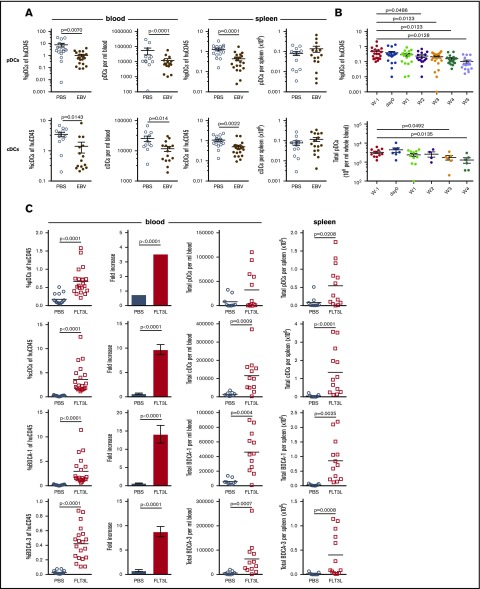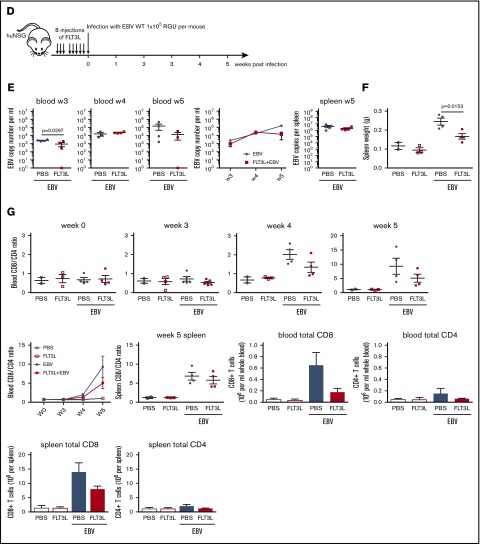Figure 6.
EBV infection decreases pDCs in the blood of huNSG mice. (A) The DC subsets, pDCs (huCD45+, HLA-DR+, CD3CD19CD56–, CD14CD16–, CD11c–, and BDCA-2+), and cDCs (huCD45+, HLA-DR+, CD3CD19CD56–, CD14CD16–, and CD11c+) were examined by using flow cytometry (see supplemental Figure 5A for gating strategy) in the blood and spleens of huNSG mice, 5 to 6 weeks after infection with 1 × 105 RGU EBV IP or PBS treatment as a control. The DC frequencies of huCD45+ cells (n = 16-21, from 6 individual cohorts) and total numbers (n = 12-15, from 5 individual cohorts) of the DC subsets were determined. (B) pDC frequencies (n = 16-20, paired Student t test) and total numbers (n = 4-11, unpaired Student t test) were measured over time. (C) FLT3L (20 μg per mouse) or PBS was injected IP into huNSG mice for 5 or 8 consecutive days to expand the DC compartment. The DC frequencies of huCD45+ cells, their fold increase, and total DC numbers in the blood (PBS, n = 15; FLT3L, n = 20), as well as the total DC number in the spleen (PBS, n = 9; FLT3L, n = 13), were assessed for pDCs, cDCs, and the BDCA-1+ or BDCA-3+ cDC subsets. (D) After 8 IP injections of FLT3L, huNSG mice from one cohort were infected with 1 × 105 RGU EBV and thereafter monitored for T-cell expansion and EBV viral load in the blood (schematic depiction). (E) EBV viral load was determined at weeks 3 to 5 in the blood and at week 5 in the spleen. (F) Spleen weight was determined at week 5, and unpaired Student t tests were applied. (G) Conversion of the CD8/CD4 T-cell ratio was monitored weekly in the blood and in the spleen at week 5. Total CD8+ and CD4+ T-cell numbers per milliliter whole blood and per spleen at week 5 are depicted. In the summary graphs over time (E,G), data are presented as the mean ± SEM (PBS, n = 2; FLT3L, n = 3; EBV + PBS, n = 4; EBV + FLT3L, n = 4).


